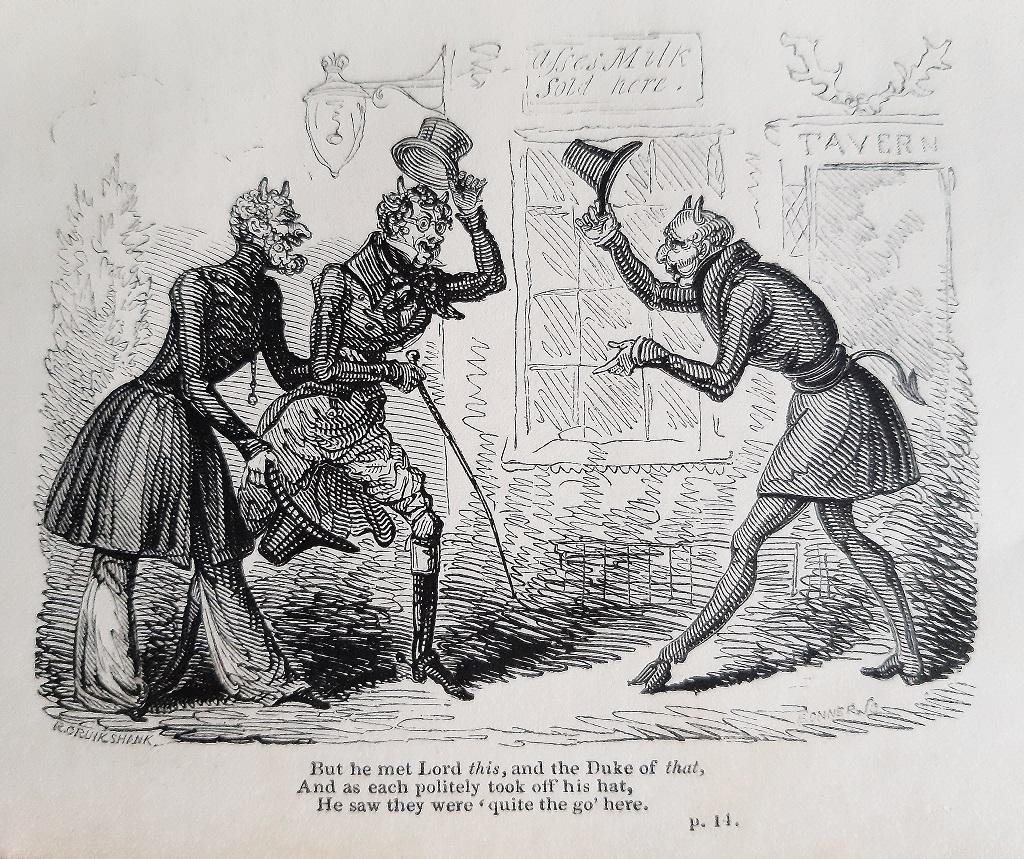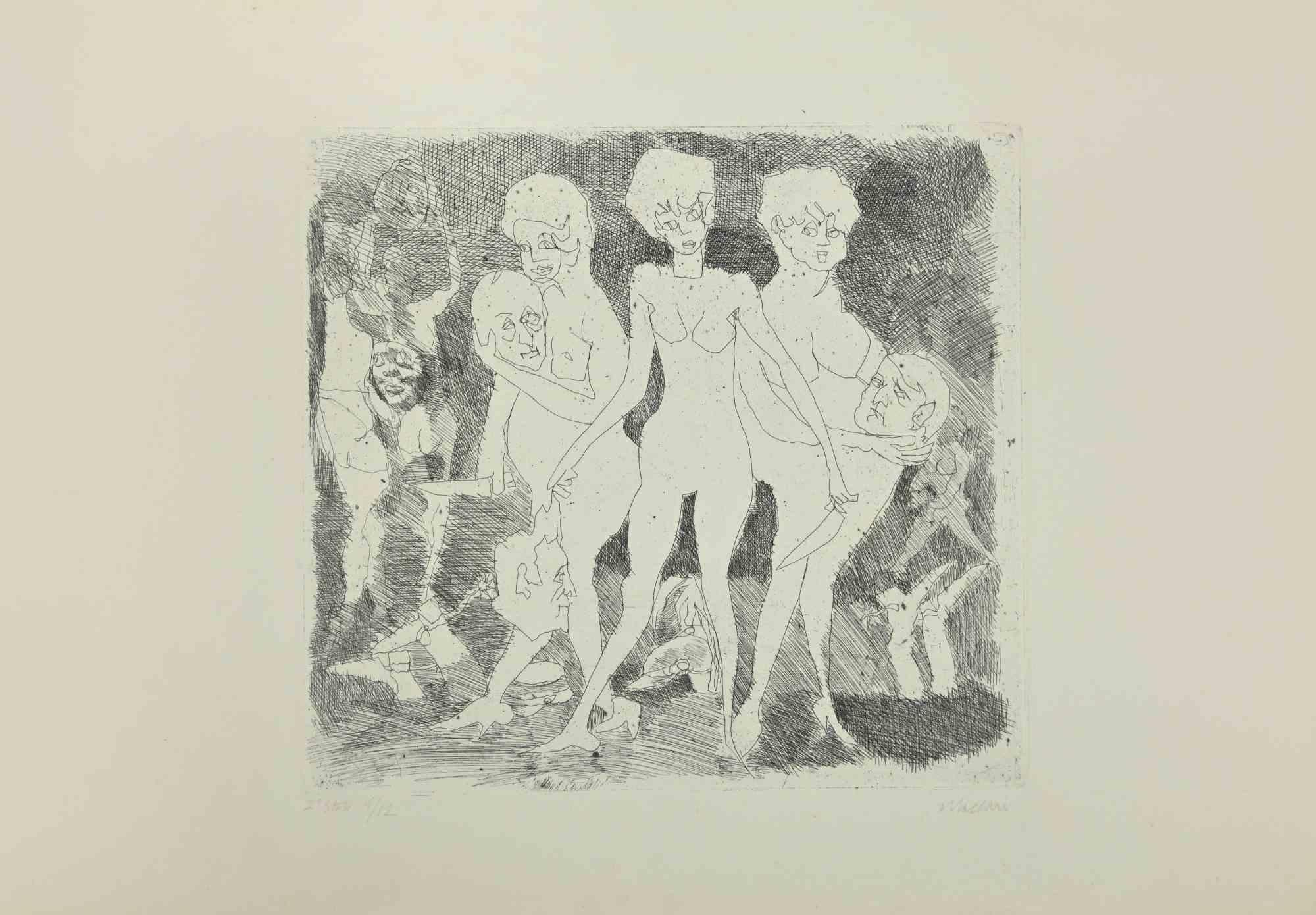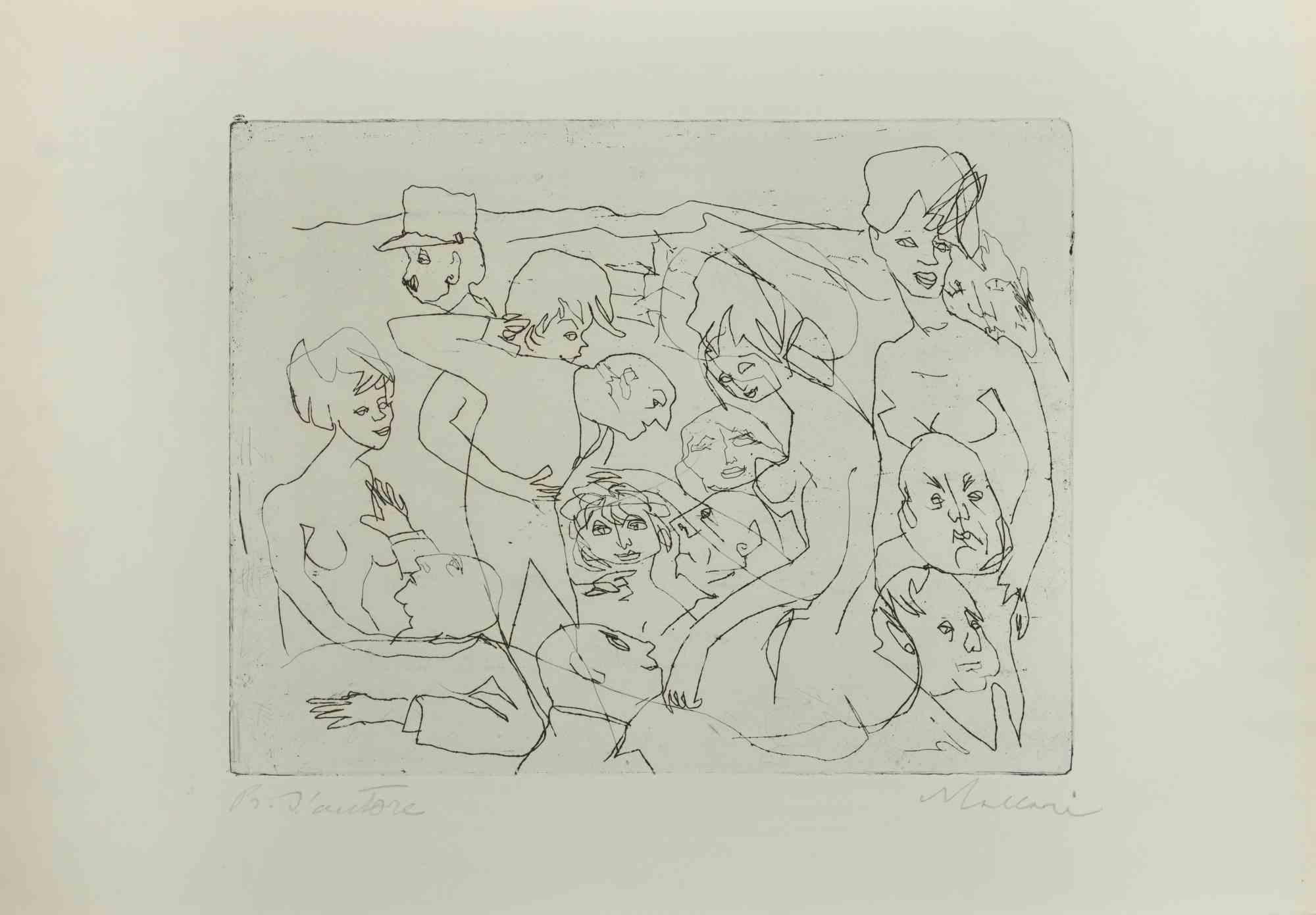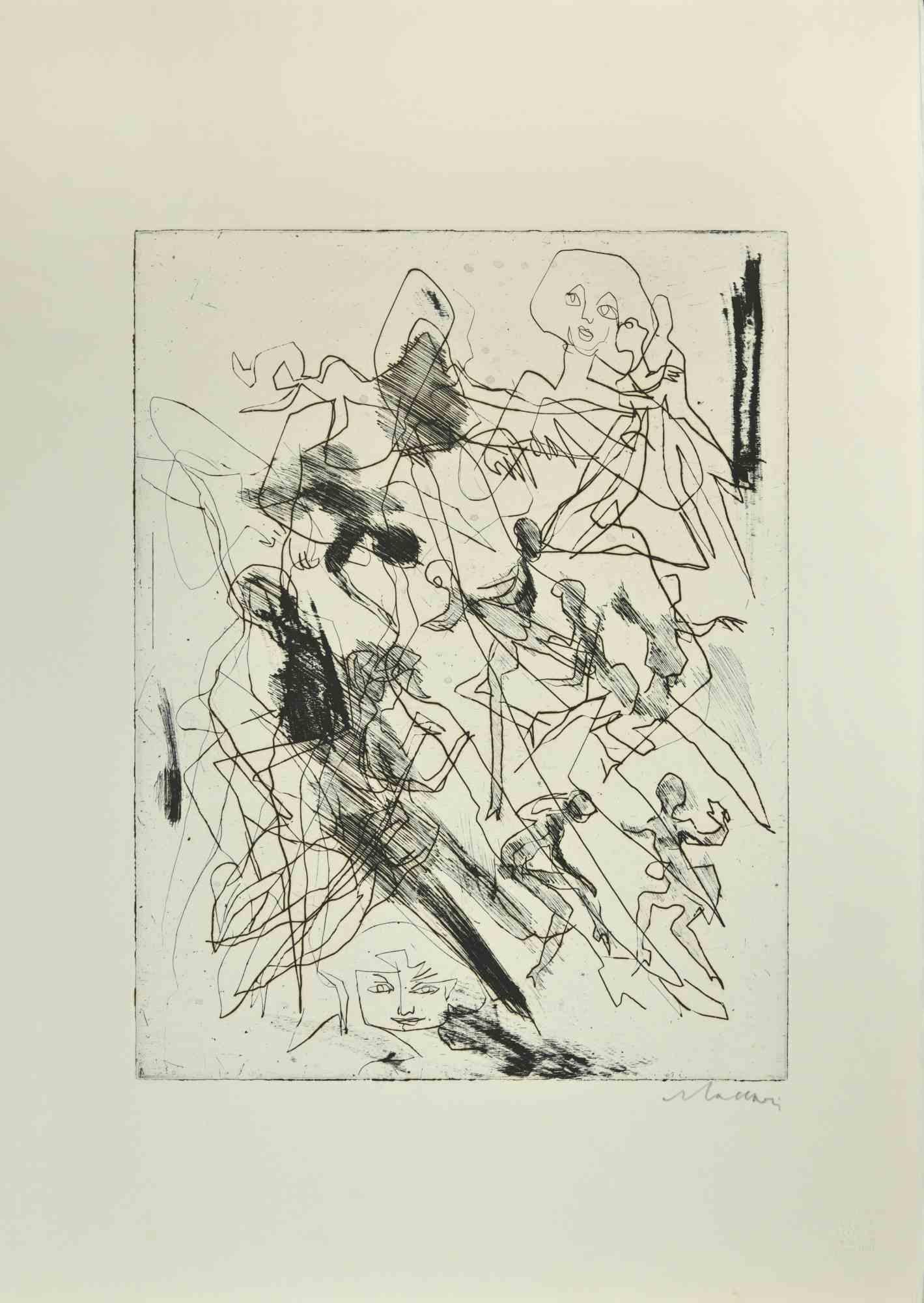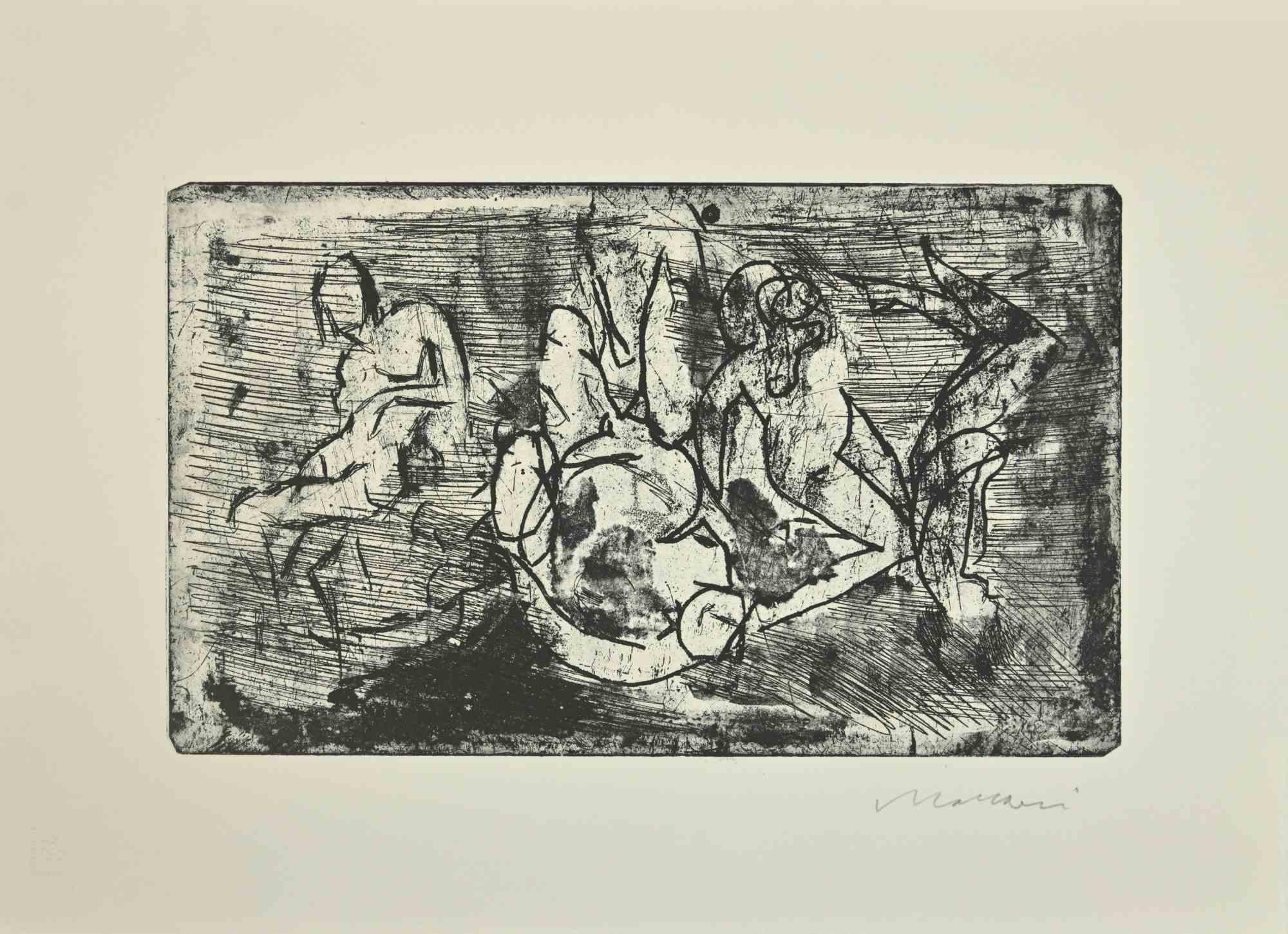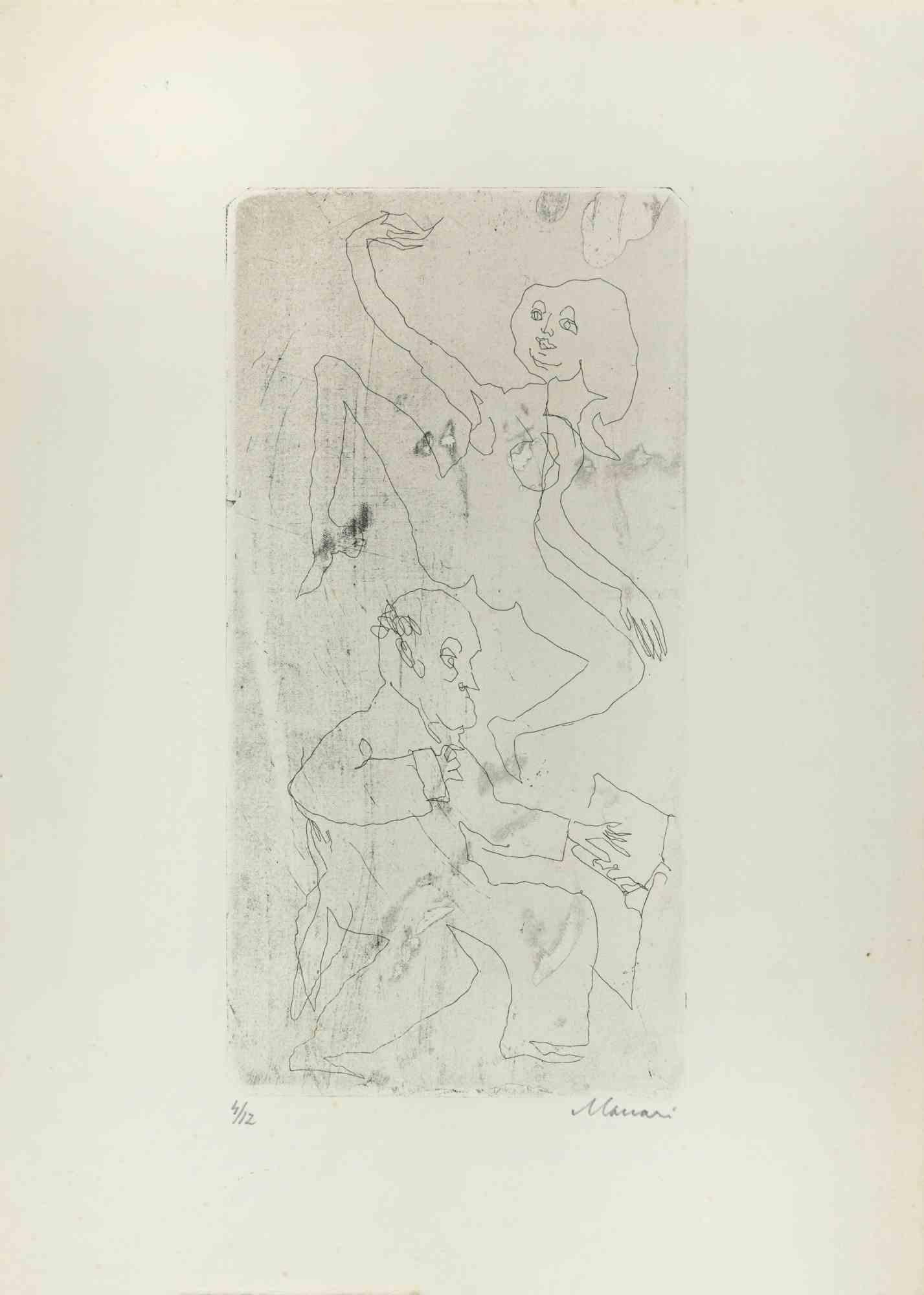Henri MatisseThe Calypso Episode (Ulysses, PL.201)1935
1935
About the Item
- Creator:Henri Matisse (1869-1954, French)
- Creation Year:1935
- Dimensions:Height: 21.5 in (54.61 cm)Width: 18.75 in (47.63 cm)
- Medium:
- Movement & Style:
- Period:
- Condition:Generally very good condition with some toning to the paper and a small 1/2" tear at the lower right side of the paper margin.
- Gallery Location:Greenwich, CT
- Reference Number:
Henri Matisse
Whether working as a draftsman, a sculptor, a printmaker or a painter, Henri Matisse was a master of color. Although classically trained at the Académie Julian, in Paris, he quickly abandoned traditional techniques and genres to pioneer a style all his own, marked by quick, gestural strokes and fluid contours.
Along with fellow painter André Derain, Matisse was the leading proponent of Fauvism, a movement whose name is derived from the French word for "wild beast.” Marked by vibrant hues, Fauvist paintings like Matisse’s famous 1906 composition Le Bonheur de vivre use wild, active brushstrokes and a palette unconstrained by nature, resulting in women with purple skin and trees with orange leaves. Often, these compositions unite pure color with the white of exposed canvas to create a sense of transparency and light.
In addition to masterful landscapes and still lifes, Matisse loved to paint erotic subjects, particularly the female nude. Rejecting strict realism, he distilled the form into its essential parts and then translated these into voluptuous, rounded contours. With its striking colors and sculptural modeling of the figure, Odalisque couchée aux magnolias is among Matisse’s most famous works — and the most expensive work of his ever sold — depicting Henriette Darricarrère, his muse and favorite model for around seven years, lounging luxuriously in his Nice studio. In pictures like the lithograph Nu Bleu, he explored the expressive power of a body in motion by placing his figures in twisted or contorted poses, transforming their limbs into tangles of color and shape that push figure painting toward abstraction.
Find original Henri Matisse prints, sculptures and other art on 1stDibs.
- ShippingRetrieving quote...Ships From: Costa Mesa, CA
- Return PolicyA return for this item may be initiated within 3 days of delivery.
- La Paix du Soir, 1981 (Les Songes #6)By Marc ChagallLocated in Greenwich, CTLa Paix du Soir (Evening Peace) is an etching on paper with an image size of 12 x 9 inches, signed 'Marc Chagall' lower right and annotated lower left. From the edition of 61, number...Category
20th Century Modern Prints and Multiples
MaterialsEtching, Paper
- The Cyclops (Ulysses, PL.205)By Henri MatisseLocated in Greenwich, CTThis etching on paper, 11.75 x 8.25" image size, is signed ‘Henri Matisse’ lower right, numbered lower left, and framed in a beautiful, custom gold-leaf frame. From the edition of 15...Category
1930s Modern Prints and Multiples
MaterialsEtching, Paper
- The Circe Episode (Ulysses, PL.203)By Henri MatisseLocated in Greenwich, CTThis etching on paper, 11.75 x 8.25" image size, is signed ‘Henri Matisse’ lower right, numbered lower left, and framed in a beautiful, custom gold-leaf frame. From the edition of 15...Category
1930s Modern Prints and Multiples
MaterialsEtching, Paper
- Musique, 1981 (Les Songes #7)By Marc ChagallLocated in Greenwich, CTMusique (Music) is an etching on paper with an image size of 12 x 9 inches, signed 'Marc Chagall' lower right and annotated lower left. From the edition of 61, numbered VII/X (there ...Category
20th Century Modern Prints and Multiples
MaterialsEtching, Paper
- Nude Seated Cross-legged... (347 Series, B.1757)By Pablo PicassoLocated in Greenwich, CT"Nude Seated Cross-Legged and 'Grotesque' with Hand on Heart" is an etching from Picasso's 347 Series with an image size of 6 x 8 inches, signed 'Pic...Category
20th Century Modern Prints and Multiples
MaterialsPaper, Etching
- Mon Dieu, quel homme, qu'il est petit… (347 Series, B.1629)By Pablo PicassoLocated in Greenwich, CT"Mon Dieu, quel homme, qu'il est petit..." is an aquatint from Picasso's 347 Series with an image size of 2.3 x 3.3 inches, signed 'Picasso' lower right, and ...Category
20th Century Modern Prints and Multiples
MaterialsPaper, Aquatint
- Comic Poems - Rare Book Illustrated by G. Cruikshank - 1830By George CruikshankLocated in Roma, ITComic Poems ("Seven illustrated books in one volume") is an original modern rare book illustrated by George Cruikshank (London, 1792 - London, 1878) in 1829/1830. Published by Johnston, London. Original First Edition. Seven books bound in one volume (Tom Thumb, The real Devil’s Walk, Monsieur Tonson, The March of intellect, The Devil’s Walk, Steamers v. Stages and The Epping Hunt). Format: in 12°. The book includes Fortyfive etchings and woodcuts. Mint conditions. George Cruikshank (London, 1792 - London, 1878) was a British caricaturist and book illustrator, praised as the "modern Hogarth" during his life. His book illustrations for his friend di lui Charles Dickens, and many other authors, reached an international audience. For Charles Dickens, Cruikshank illustrated Sketches by Boz...Category
1830s Modern More Art
MaterialsPaper, Etching, Woodcut
- Figures - Drypoint by Mino Maccari - Mid-20th CenturyBy Mino MaccariLocated in Roma, ITMid-20th Century. Hand-signed in the lower right part. Numbered. Edition 1/12. Good conditions. Mino Maccari (Siena, 1924-Rome, June 16, 1989) was an Italian writer, painter, engraver and journalist, winner of the Feltrinelli Prize for Painting in 1963 and first winner of the Forte dei Marmi Satira Prize in 1973.After completing his secondary education, he enrolls in university. An interventionist like many young people of his time, he took part in the Great War at the age of nineteen as a field artillery officer. At the end of the conflict he resumed his university studies in Siena and in 1920 he graduated in law. In 1924 he was called by Angiolo Bencini to take care of the printing of the magazine Il Selvaggio, openly uncompromising fascist, revolutionary and anti-bourgeois, where his first engravings were published. After a few years of coexistence between work at the newspaper and the law firm, at the beginning of 1926 he left the legal profession to take over the direction of Il Selvaggio which he would hold until 1942. In 1928 he was the author of the small book published by Vallecchi (Florence), Il Trastullo di Strapaese (little songs and engraved woodwinds) which collected fascist songs (the same book was seized several times from Antonio Gramsci during his detention). With the transfer of the editorial staff of the Selvaggio in 1925 from Colle di Val d'Elsa to Florence, Maccari collaborated with Ardengo Soffici, Ottone Rosai and Achille Lega. In the meantime, between 1927 and 1930, he made himself known to the general public as a painter by participating in various national exhibitions. Also in 1930 Maccari works in Turin at La Stampa as editor-in-chief and has the writer Curzio Malaparte as director. His presence in the cultural and editorial world of the fascist regime is very intense, he writes and collaborates with various magazines: Quadrivio, L'Italia Letteraria, L'Italiano and Omnibus by Leo Longanesi; then, during the war, in il Primato di Bottai and, subsequently again, in Il Mondo di Pannunzio (from the first number, in 1949), up to Documento by Federigo Valli. His graphic production is also vast, ranging from the Album of Vallecchi (1925), Il trastullo di Strapaese (1928) to Linoleum (1931). Maccari illustrated in 1934 La vecchia del Bal Bullier by Antonio Baldini and in 1942 he published the Album folder, followed by Come quando fuori Piove and Il superfluo illustrata.For his pictorial work full of evident chromatic accentuations and fast brushstrokes, the violent drawing combined with the lively stroke of the graphic sign of his engravings, he is recognized by critics as a complete artist. In 1962 he was also entrusted with the presidency of the Accademia di San Luca in Rome and managed to obtain a personal exhibition at Gallery 63 in New York. His production of drawings, watercolors, temperas, etc. is endless, sometimes in collaboration with prestigious publishing houses; it is worth mentioning, just as an excellent example, the 32 b/w and color drawings with which he illustrated Il gusto di vivere, a volume that collects writings by Giancarlo Fusco, edited by Natalia Aspesi and published by Laterza in 1985. Maccari, Sienese and great contradaiolo della Torre, painted the Palio...Category
Mid-20th Century Modern Figurative Prints
MaterialsPaper, Drypoint, Etching
- Figures - Etching by Mino Maccari - 1940sBy Mino MaccariLocated in Roma, ITFigures is an Etching realized by Mino Maccari in the 1940s. Hand-signed in the lower right part. Artist's Proof. Good conditions. Mino Maccari (Siena, ...Category
1940s Modern Figurative Prints
MaterialsPaper, Etching
- Figures - Etching by Mino Maccari - Mid-20th CenturyBy Mino MaccariLocated in Roma, ITFigures is an Etching realized by Mino Maccari in the Mid-20th Century. Hand-signed in the lower right part. Good conditions. Mino Maccari (Siena, 1924-Rome, June 16, 1989) was...Category
Mid-20th Century Modern Figurative Prints
MaterialsPaper, Etching
- Figures - Drypoint by Mino Maccari - Mid-20th CenturyBy Mino MaccariLocated in Roma, ITFigures is an Etching and Drypoint realized by Mino Maccari in the Mid-20th Century. Hand-signed in the lower right part. Good conditions. Mino Maccari (Siena, 1924-Rome, June ...Category
Mid-20th Century Modern Figurative Prints
MaterialsPaper, Drypoint, Etching
- Figures - Etching by Mino Maccari - Mid-20th CenturyBy Mino MaccariLocated in Roma, ITFigures is an Etching realized by Mino Maccari in the Mid-20th Century. Handisigned in the lower right part. Numbered. Edition 4/12. Good conditions. Mino Maccari (Siena, 1924-Rome, June 16, 1989) was an Italian writer, painter, engraver and journalist, winner of the Feltrinelli Prize for Painting in 1963 and first winner of the Forte dei Marmi Satira Prize in 1973.After completing his secondary education, he enrolls in university. An interventionist like many young people of his time, he took part in the Great War at the age of nineteen as a field artillery officer. At the end of the conflict he resumed his university studies in Siena and in 1920 he graduated in law. In 1924 he was called by Angiolo Bencini to take care of the printing of the magazine Il Selvaggio, openly uncompromising fascist, revolutionary and anti-bourgeois, where his first engravings were published. After a few years of coexistence between work at the newspaper and the law firm, at the beginning of 1926 he left the legal profession to take over the direction of Il Selvaggio which he would hold until 1942. In 1928 he was the author of the small book published by Vallecchi (Florence), Il Trastullo di Strapaese (little songs and engraved woodwinds) which collected fascist songs (the same book was seized several times from Antonio Gramsci during his detention). With the transfer of the editorial staff of the Selvaggio in 1925 from Colle di Val d'Elsa to Florence, Maccari collaborated with Ardengo Soffici, Ottone Rosai and Achille Lega. In the meantime, between 1927 and 1930, he made himself known to the general public as a painter by participating in various national exhibitions. Also in 1930 Maccari works in Turin at La Stampa as editor-in-chief and has the writer Curzio Malaparte as director. His presence in the cultural and editorial world of the fascist regime is very intense, he writes and collaborates with various magazines: Quadrivio, L'Italia Letteraria, L'Italiano and Omnibus by Leo Longanesi; then, during the war, in il Primato di Bottai and, subsequently again, in Il Mondo di Pannunzio (from the first number, in 1949), up to Documento by Federigo Valli. His graphic production is also vast, ranging from the Album of Vallecchi (1925), Il trastullo di Strapaese (1928) to Linoleum (1931). Maccari illustrated in 1934 La vecchia del Bal Bullier by Antonio Baldini and in 1942 he published the Album folder, followed by Come quando fuori Piove and Il superfluo illustrata.For his pictorial work full of evident chromatic accentuations and fast brushstrokes, the violent drawing combined with the lively stroke of the graphic sign of his engravings, he is recognized by critics as a complete artist. In 1962 he was also entrusted with the presidency of the Accademia di San Luca in Rome and managed to obtain a personal exhibition at Gallery 63 in New York. His production of drawings, watercolors, temperas, etc. is endless, sometimes in collaboration with prestigious publishing houses; it is worth mentioning, just as an excellent example, the 32 b/w and color drawings with which he illustrated Il gusto di vivere, a volume that collects writings by Giancarlo Fusco, edited by Natalia Aspesi and published by Laterza in 1985. Maccari, Sienese and great contradaiolo della Torre, painted the Palio...Category
Mid-20th Century Modern Figurative Prints
MaterialsPaper, Etching
